boomchakabowwow
Senior Member
- Joined
- Feb 1, 2013
- Messages
- 3,631
- Reaction score
- 5,526
not the most photogenic meal, but since I had it in the jungles of Peru, I am been making Lentil soups. stick-blender fun!!




My gf and me, we love this dish, too. The garlic gets so mild and tasty. Oh, and we always add olives...
You freaks... you may as well throw some anchovies in there ugh salsa verde cough)My gf and me, we love this dish, too. The garlic gets so mild and tasty. Oh, and we always add olives...
Olives, anchovies, and don’t forget capers!!You freaks... you may as well throw some anchovies in there ugh salsa verde cough)
Olives are a good ideaMy gf and me, we love this dish, too. The garlic gets so mild and tasty. Oh, and we always add olives...















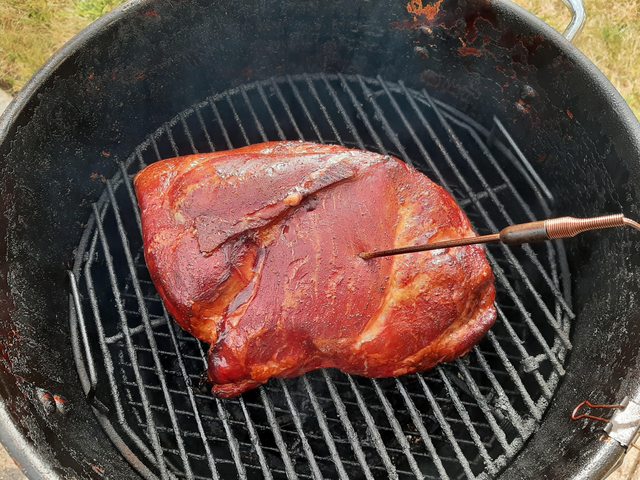
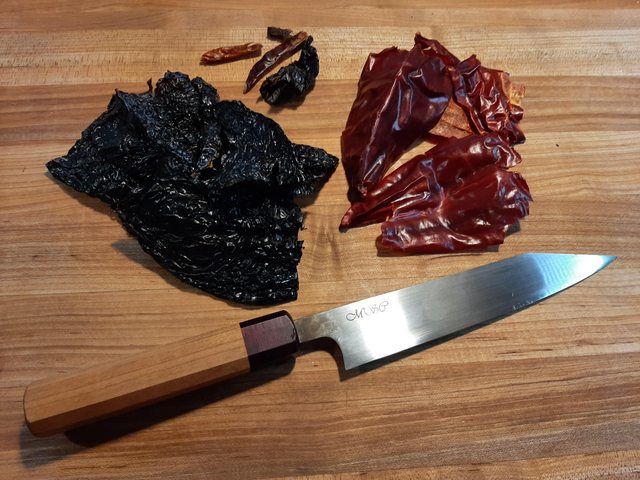
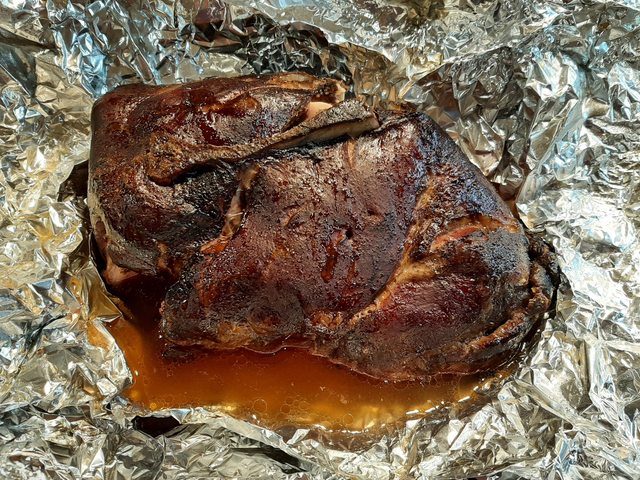
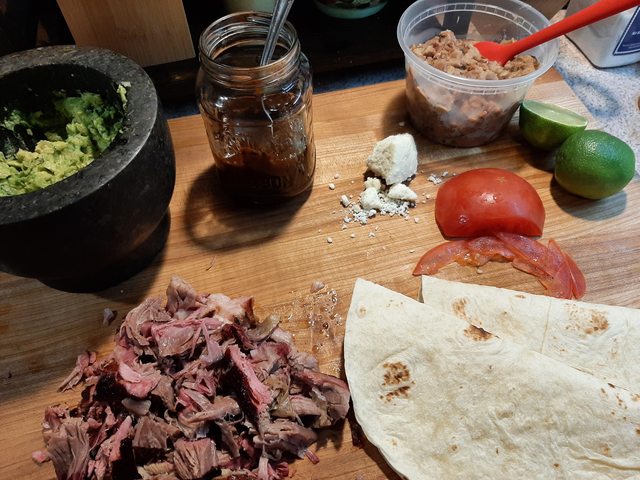






You're the man... I love Schwarze NussMade smoked and dried "Nußschinken". It comes from the upper front part of the hind leg, number 16 in this diagram:
View attachment 199072
Meat prepared for curing for two weeks in vacuum:
View attachment 199073
After curing:
View attachment 199074
Trussed and hung up to dry and equilibrate for a few days:
View attachment 199075
Then four cold smoking sessions spread over four days, eight hours of smoke each time. After that, dry the ham some more (about a week), re-seal in vacuum and ripen in the fridge for a month. Finally, hung up for a few days more to dry:
View attachment 199076
And the finished product. It's tasty. Very tasty
View attachment 199077
Wow... Fermentation is an art of its own... I know that e.g. in nordic cuisine it is very widespread and has become quite sophisticated in certain kitchens of well known restaurants.I am playing with the fermentation of foods lately.
View attachment 199111
Lacto fermented kohlrabi by the kraut method. Very delicious. The nice thing about kohlrabi is that the taste resembles the one of sauerkraut but you don't have to buy and use a whole head of cabbage.
View attachment 199112
Peachshrub.
View attachment 199113
Left to right some new ferments that I started today; except for the fermented garlic I havn't tried the ferments before:
View attachment 199114
(1) In honey fermented blue berries
(2) Lacto fermented beans with garlic, bay leaf, mustard seeds and chilly. Looking backwards I should've added some thinly sliced red onion. Don't want to remove the beans from the container now anymore. So I'll do that the next time.
View attachment 199115
(3) Lacto fermented radishes. With a hint of sugar and chilly in the brine.
(4) Carrots fermented by the kraut method. Added some ginger and grated apple to the carrots.
(5) Sichuan fermented vegetables. The brine contains besides the obligatory salt some ginger, star anis, mustard seeds, sechuan pepper corns and a dash of vodka. As vegetables I used some nappa cabbage, cauliflower, carrots and beans.
View attachment 199116
(6) Lacto fermented garlic. After fermentation the taste get's some additional fruity notes. Besides of enjoying the taste I like that I'll have some garlic at hand that I don't have to peel, when I need it.

@camochili
I enjoy lacto fermented vegetables as small condinements for main meals. If i want to add some sourness to balance a meal then some fermented ( or vinegar brined) vegetables come very handy.
If you stick to lacto fermentation the stuff is actually very simple. Just take some vegetables, salt and water and throw everything together.
As a general starting point I like the book 'Magic Fermentation' from Marcel Kruse and Geru Pulsinger.
It gives a very broad overview over available fermented foods and how they are prepared.
Additionally the book gives a number of very interesting appetising sample recipes.
The recipe of the honey fermented blueberries is from this book.
Additonally I bought 'Fermented Vegetables: Creative Recipes for Fermenting 64 Vegetables & Herbs in Krauts, Kimchis, Brined Pickles, Chutneys, Relishes & Pastes' by Kirsten K. Shockey.
The Kohlrabi-Kraut was from this book. The fermented radished, beans and carrots that I've shown are also from her book.
If you like some online articles:
If you are interested in lacto fermentation:
I once had a very good article about lacto fermentation, but I don't find it anymore.
Please let me recap the most important information of it:
Basically lacto fermentation buils down that you need an anerobic, watery enviroment with a salt content between 1 and 9 per cent for the lacto bacterias to do their job. This job consists of creating the lactic acid that gives the food it's typical taste as well of keeping other bacterias and funguses away.
For the fermentation to work the vegetables/fruit must be submerged so they have no contact with oxygen.
Many considere a salt concentration between 1 and 3 percent in the fermentation liquid as ideal. Although chinese lacto fermented vegetables seem to aim for a salt concentration between 6 and 8 per cent.
There are three methods of lacto fermentation that I am aware of:
(1) With hard vegetables that absorb only a little to no water you simply sink the vegetables in a brine with the desired salt concentration.
(2) Finely grind some vegetables and mash them. Add some salt to the released liquid. The released juices build the base for the brine that again should have an appropriate salt content. Somewhere else I've read that a salt content of 0.25 per cent of vegetable weight as a good rule of thumb. Personally I go by taste.
(3) Soft condinements that disintegrate to a sauce. In this case you add no liquids. The whole sauce acts like the brine. The overall volume of the sauce should be used as a base to calculate the required amount of salt.
An example for (1) would be this one:
https://www.thespruceeats.com/lacto-fermented-carrot-recipe-1327619Please note that although most recipes for sauerkraut call for method (2) this method can also be applied to make sauerkraut. I the cut the cabbage in shreds with a thickness of about 5mm and use a brine with avout 2 per cent salt content. I massage the cabbage a little. After 3 to five days the cabbage was sour enough for my taste. White cabbage works very well with lacto fermentation. Because of this, this brined fermented cabbage was the first ferment that I tried.
An example for (2) would be this:
https://atmykitchentable.org/recipes/pickles-recipes/pickling-naturally-kohlrabi-kraut/
An example for (3) would be
The one time it worked it tasted amazing.
Sadly the last two time it failed. If you want to try for yourself you may use some brine from a previous fermentation to give it a head start and don't omit the garlic.
Next time I am also planning to prevent contact with air by using a water filled ziploc.
If you are interested in the topic of shrub making:
https://myculturedlife.com/recipes/how-to-make-shrubs/As
https://www.budorganic.com.au/christmas-shrubs-sweet-fermented-drinking-vinegars/explains first you grow some yeasts that produce alcohol.
You then add vinegar and vinegar producing bactoeria that take the alcohol produced by the yeast and turn it to vinegar.
If you are interested in chinese fermented vegetables:
https://msshiandmrhe.com/chinese-pickles/
What I find very intriguing about this topic that people
says that they kept their brine for a very long time and that as the brine grows older it starts to give a better taste and ferments the vegetables faster.
Sadly there are only a few sources on this topic.
So I guess when I am talking the next time with some frineds from china I'll have to ask them to ask their parents how this is done correctly.

That looks really interesting! Which recipe did you use?AJi Gallina.
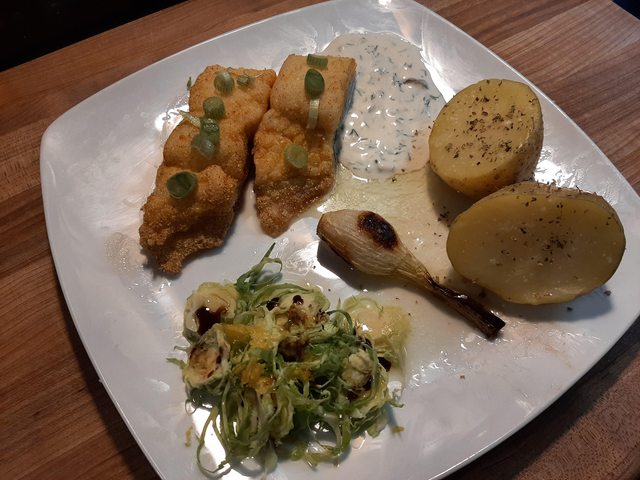
https://www.thespruceeats.com/spicy-creamed-chicken-aji-de-gallina-3029517That looks really interesting! Which recipe did you use?
Thanks for that, I’m going to try this!I was all over the place. But when I tasted the sauce, I knew I nailed it.
Enter your email address to join: